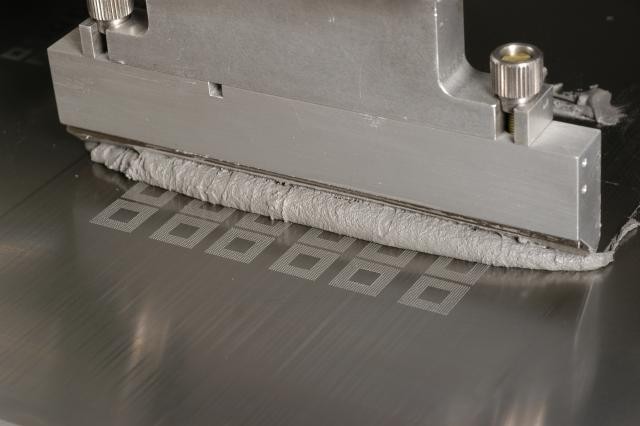Let's talk viscosity.
Most of us are experienced with paint. Paint is a thick liquid that is applied to a surface and then, for the most part, remains where it was applied. Interestingly, when the paint is stirred and the brush is dipped, its viscosity is reduced (the paint becomes "thin"), allowing it to flow onto the bristles. As the paint is applied to the wall or canvas, the act of brushing also thins the viscosity, allowing it to "level" before it dries. After application, a good paint thickens so that it doesn't run down the wall, causing a huge mess.
Ketchup is another example of a viscous material. At rest (in the container) it is difficult to get moving. We've all pounded on a ketchup bottle to get it to flow. We've all also experienced the onslaught of overflowing ketchup after we get it moving. And, we're also familiar with how ketchup sits firmly on our food once it is allowed to rest.
While we are familiar with paint and ketchup, we aren't as well-versed with the concept of viscosity, the characteristic that allows the paint to both flow and set, and allows the ketchup to pour, then to remain on our food.
So what does this have to do with solder paste? Well, solder paste is also a viscous material. When you apply a high-quality solder paste to your stencil it will stay where it is put. It will then thin as the squeegees push it back and forth across the stencil. This thinning allows the paste to be printed through the stencil apertures.
 Often, during squeegee deposition, a thin line of solder paste builds up on the stencil, on both sides of the squeegee blade. This paste remains untouched, and, therefore, unthinned; quite unlike the mass of paste which is being squeegeed back and forth. I've seen operators scoop this paste up from the edges (after it has been sitting idle for several passes), and put it directly back onto the roll of solder which is being pushed back and forth across the stencil. The problem with this approach is that those lines of paste along the edges have not been continuously sheared by the squeegee. That solder paste is much higher in viscosity than the roll of paste which has been continuously printed. When these two pastes are mixed, it alters the print quality of the next several depositions.
Often, during squeegee deposition, a thin line of solder paste builds up on the stencil, on both sides of the squeegee blade. This paste remains untouched, and, therefore, unthinned; quite unlike the mass of paste which is being squeegeed back and forth. I've seen operators scoop this paste up from the edges (after it has been sitting idle for several passes), and put it directly back onto the roll of solder which is being pushed back and forth across the stencil. The problem with this approach is that those lines of paste along the edges have not been continuously sheared by the squeegee. That solder paste is much higher in viscosity than the roll of paste which has been continuously printed. When these two pastes are mixed, it alters the print quality of the next several depositions.
Observable symptoms of this condition include:
- The paste no longer rolls across the stencil but slides or "skips" across the surface until it all shears thin again.
- The paste hangs up on (sticks to) the squeegee blades, especially right where the thicker material was added.
It usually doesn't take long for the paste to thin and begin printing properly again (usually a couple of passes). But, it is a momentary problem in the process which can lead to seriously poor print volumes. Occasionally this produces NO print volume (if the paste slides across the surface of the stencil, it will not be pushed through the apertures appropriately as it would if it was rolling properly). Since technicians rarely (or never) record the moments when they scoop and place this solder paste, defects related to this technique can be nearly impossible to trace and solve.
The main takeaway is that solder paste which has been sitting (without shearing) should not be added directly to a roll of sheared, printing solder paste. This is also true with paste being added to resupply the paste roll on the stencil as it is used up - be sure the new paste is stirred thoroughly first. (With paste in a cartridge, it will thin as it is forced through the cartridge tip).
As a related piece of information, my colleague, Dr. Andy Mackie, authored a blog post which shows the thickening and thinning of solder paste with resting and shearing (printing). Solder Paste: Drying Out or Relaxing?


